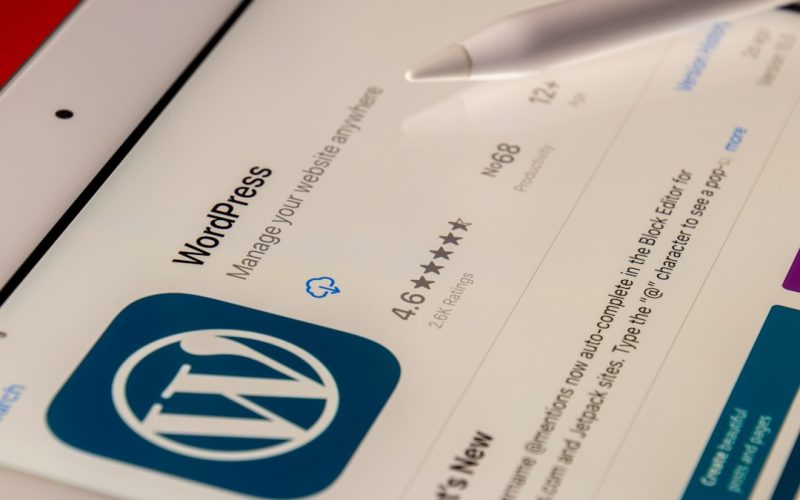To create content that resonates, I must first understand my audience. This involves delving into their interests, preferences, and pain points. By identifying who they are, I can tailor my writing to meet their needs and expectations.
I often find it helpful to create audience personas, which are fictional representations of my ideal readers. These personas help me visualize the demographics, behaviors, and motivations of my audience, allowing me to craft content that speaks directly to them. Moreover, I engage with my audience through various channels, such as social media, comments sections, and surveys.
This interaction provides invaluable insights into what they are looking for and what challenges they face. By listening to their feedback and observing their reactions to different types of content, I can refine my approach and ensure that my writing remains relevant and engaging. Understanding my audience is not a one-time task; it’s an ongoing process that requires continuous learning and adaptation.
Table of Contents
ToggleKey Takeaways
- Understanding your audience is crucial for creating content that resonates with them and meets their needs and interests.
- Choosing the right topics involves researching popular trends, keywords, and industry news to ensure your content is relevant and engaging.
- Creating compelling headlines is essential for grabbing your audience’s attention and enticing them to click and read your content.
- Incorporating visuals and multimedia such as images, videos, and infographics can enhance the appeal and shareability of your content.
- Writing in a conversational tone helps to connect with your audience on a personal level and make your content more relatable and engaging.
Choosing the Right Topics
Once I have a firm grasp of my audience, the next step is selecting the right topics to write about. I strive to choose subjects that not only interest my readers but also align with my expertise and passion. This alignment is crucial because it allows me to write authentically and with authority.
I often brainstorm a list of potential topics based on current trends, frequently asked questions, and gaps in existing content. This brainstorming session helps me generate ideas that are both timely and valuable. Additionally, I pay attention to what is trending in my niche.
Tools like Google Trends and social media platforms provide insights into what people are currently discussing. By tapping into these trends, I can create content that feels fresh and relevant. However, I also consider evergreen topics—those that remain relevant over time.
Balancing timely content with evergreen subjects ensures that my writing has both immediate impact and long-lasting value.
Creating Compelling Headlines

Crafting compelling headlines is an art form in itself. A great headline grabs attention and entices readers to click through to my content. I often experiment with different headline structures, such as using numbers, posing questions, or making bold statements.
For instance, headlines that promise a specific benefit or solution tend to perform well because they immediately address the reader’s needs. I also consider the emotional appeal of my headlines. Words that evoke curiosity, urgency, or excitement can significantly increase click-through rates.
To refine my headlines further, I sometimes use A/B testing to see which versions resonate more with my audience. This process not only helps me understand what works but also enhances my skills in creating headlines that capture attention and drive engagement.
Incorporating Visuals and Multimedia
| Visuals and Multimedia | Metrics |
|---|---|
| Infographics | Engagement rate |
| Videos | View count |
| Images | Click-through rate |
| Animations | Shares |
In today’s digital landscape, incorporating visuals and multimedia into my content is essential for maintaining reader interest.
I find that images, infographics, videos, and other forms of media can enhance the overall message of my writing.
Visuals break up large blocks of text, making the content more digestible and appealing.
They also provide an opportunity to convey information in a more engaging way. When selecting visuals, I ensure they are relevant and high-quality. Stock images can be useful, but I often prefer original graphics or photographs that reflect my unique perspective.
Additionally, I explore multimedia options like videos or podcasts to complement my written content. These formats allow me to reach different segments of my audience who may prefer consuming information in various ways. By diversifying the types of media I use, I can create a richer experience for my readers.
Writing in a Conversational Tone
One of the most effective ways to connect with my audience is by adopting a conversational tone in my writing. This approach makes my content feel more personal and relatable. I often imagine having a one-on-one conversation with a reader as I write, which helps me maintain a friendly and approachable style.
Using simple language and avoiding jargon allows me to communicate more effectively and ensures that my message is accessible to a broader audience. In addition to using a conversational tone, I incorporate personal anecdotes and experiences into my writing. Sharing stories from my own life not only adds authenticity but also helps readers relate to me on a deeper level.
When readers feel a connection with me as the author, they are more likely to engage with the content and return for future posts.
Utilizing Storytelling Techniques

Crafting Engaging Narratives
I often start with a hook—a compelling opening that draws readers in—followed by a narrative arc that includes conflict and resolution. This structure keeps readers invested in the story while effectively conveying the message I want to share.
Eliciting Emotions through Storytelling
Moreover, I use storytelling techniques to evoke emotions in my readers. Whether it’s humor, empathy, or inspiration, tapping into emotions can create a lasting impact.
Creating Lasting Connections
I find that stories resonate more deeply than mere facts or statistics; they create connections that foster loyalty among my audience. By incorporating storytelling into my content strategy, I can transform ordinary topics into extraordinary narratives that leave a lasting impression.
Implementing SEO Strategies
To ensure my content reaches its intended audience, I must implement effective SEO strategies. This involves optimizing my articles for search engines so they rank higher in search results. I start by conducting keyword research to identify relevant terms and phrases that my audience is searching for.
By strategically incorporating these keywords into my content—without compromising its quality—I can improve its visibility online. In addition to keyword optimization, I pay attention to other SEO factors such as meta descriptions, alt text for images, and internal linking. Crafting compelling meta descriptions encourages clicks from search engine results pages while alt text enhances accessibility for visually impaired users.
Internal linking not only helps with SEO but also guides readers to related content on my site, keeping them engaged longer.
Encouraging User Interaction
Encouraging user interaction is vital for building a community around my content. I actively invite readers to share their thoughts by asking open-ended questions at the end of each article or encouraging comments throughout the piece. This engagement fosters a sense of belonging among readers and makes them feel valued as part of the conversation.
I also utilize social media platforms to promote interaction beyond the blog itself. By sharing snippets of my content on platforms like Twitter or Instagram and encouraging followers to comment or share their opinions, I can expand the reach of my message while creating opportunities for dialogue. Engaging with readers in this way not only enhances their experience but also provides me with valuable feedback for future content.
Crafting Shareable Content
Creating shareable content is essential for increasing visibility and expanding my audience reach. To achieve this, I focus on producing high-quality articles that provide value—whether through informative insights, entertaining stories, or practical tips. When readers find something useful or enjoyable, they are more likely to share it with their networks.
I also consider the format of my content when aiming for shareability. Infographics, listicles, and how-to guides tend to perform well because they are easily digestible and visually appealing. Additionally, incorporating social sharing buttons on my website makes it easy for readers to share content across various platforms with just one click.
By prioritizing shareability in my content strategy, I can amplify its impact and reach a wider audience.
Analyzing and Adjusting Performance
To continuously improve my content strategy, I regularly analyze performance metrics using tools like Google Analytics. By examining data such as page views, bounce rates, and average time spent on each article, I gain insights into what resonates with my audience and what doesn’t. This analysis allows me to identify trends over time and adjust my approach accordingly.
I also pay attention to reader feedback through comments and social media interactions. If certain topics or formats receive more engagement than others, I take note of this information when planning future content. Adapting based on performance metrics ensures that I remain responsive to my audience’s needs while continually refining my writing skills.
Utilizing Tools and Plugins
In today’s digital landscape, there are numerous tools and plugins available that can enhance my content creation process. For instance, grammar checkers like Grammarly help me polish my writing by catching errors and suggesting improvements in real-time. Additionally, SEO plugins such as Yoast SEO provide valuable insights into optimizing each article for search engines.
I also explore tools for graphic design like Canva or Adobe Spark to create eye-catching visuals without needing extensive design skills. These resources streamline the process of producing high-quality content while allowing me to focus on what truly matters: delivering value to my audience through engaging writing. By leveraging these tools effectively, I can enhance both the quality of my content and the efficiency of my workflow.
In conclusion, creating compelling content requires a multifaceted approach that encompasses understanding the audience, choosing relevant topics, crafting engaging headlines, incorporating visuals, writing conversationally, utilizing storytelling techniques, implementing SEO strategies, encouraging interaction, crafting shareable pieces, analyzing performance metrics, and utilizing helpful tools and plugins. By embracing these strategies holistically, I can produce content that not only captivates but also resonates deeply with readers while fostering a loyal community around my work.
If you’re looking to enhance your WordPress website even further, you may want to consider mastering the art of website SEO audits. This comprehensive guide from SimonSaysWebDesign provides valuable insights on how to optimize your site for search engines and improve your online visibility. By conducting regular SEO audits, you can identify areas for improvement and implement strategies to boost your website’s performance. Additionally, if you’re interested in exploring the new Gutenberg editor for WordPress, SimonSaysWebDesign also offers a helpful guide on mastering this powerful tool. And if you’re feeling overwhelmed with managing your WordPress site, you may want to consider hiring a WordPress expert to help you navigate the complexities of website design and maintenance. Check out the article here for more information on these valuable resources.
FAQs
What is engaging content?
Engaging content is material that captures the attention and interest of the audience, encouraging them to interact with and share the content. It is compelling, relevant, and valuable to the reader.
Why is engaging content important for a WordPress website?
Engaging content is important for a WordPress website because it helps to attract and retain visitors, improve search engine rankings, and encourage social sharing. It also helps to build a loyal audience and establish the website as a valuable resource in its niche.
How can I write engaging content for my WordPress website?
To write engaging content for your WordPress website, you can start by understanding your target audience, creating a compelling headline, using visuals to enhance the content, telling a story, and encouraging interaction through comments and social sharing buttons.
What are some tips for creating engaging content?
Some tips for creating engaging content include understanding your audience’s needs and interests, using a conversational tone, providing valuable information, incorporating multimedia elements, and ending with a strong call to action.
How can I measure the engagement of my content on WordPress?
You can measure the engagement of your content on WordPress by tracking metrics such as page views, time on page, bounce rate, social shares, comments, and conversion rates. WordPress plugins and analytics tools can help you gather and analyze this data.




